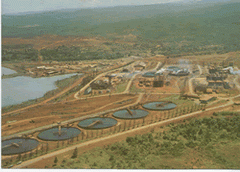Venezuela trumps China in Cuba feronickel deal
- Submitted by: admin
- Asia
- International
- South America
- Business and Economy
- 01 / 29 / 2007

"The Chinese are not continuing, we are redoing the project with Venezuela," Cuban Minister of Foreign Investment and Economic Cooperation, Marta Lomas, told Reuters, when asked about the Camarioca nickel works.
"We are forming a joint venture with Venezuela for Camarioca," Lomas said.
China's state-owned Minmetals Corp. signed an agreement in 2004 to invest in Camarioca, but nothing has happened since then, according to western businessmen who supply the industry.
Venezuela's taking over of the project should allow Cuba to start up the unfinished Las Camarioca plant, which has been mothballed since the demise of the Soviet Union 15 years ago.
The two countries announced last week plans to produce stainless steal in Venezuela using Cuban fero-nickel.
Cuban officials have said in the past Camarioca could produce 68,000 tonnes of ferro-nickel annually (21,000 tonnes nickel).
Ferro-nickel is an iron-nickel combination mostly used in steel-making.
Nickel is essential in the production of stainless steel and other corrosion-resistant alloys. Cobalt is critical in production of super alloys used for such products as aircraft engines.
Cuba currently has three plants operating in Holguin, one a joint venture with Canadian resource company Sherritt International Corp. and two older plants.
The Communist-run Caribbean island is one of the world's largest nickel producer, at an average 72,000 tonnes per year, and supplies 10 percent of the world's cobalt, according to the Basic Industry Ministry.
Unrefined nickel plus cobalt has consolidated its position as Cuba's largest export at around $2 billion in revenue last year. Cuban nickel is considered to be Class II with an average 90 percent nickel content.
Cuba's National Minerals Resource Center reported that eastern Holguin province, where the industry is located, had around a third of the world's known reserves. (Additional reporting by Marc Frank)
Source: Reuters
Comments